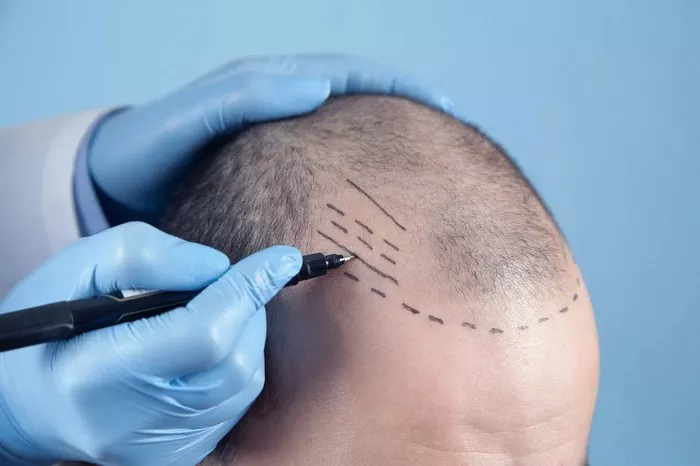Hair loss, a concern affecting millions worldwide, prompts many to seek solutions to regain their confidence and restore their appearance. Among the various remedies available, hair transplants stand out as a popular choice for individuals experiencing hair loss on the crown. This article delves into the effectiveness of hair transplants, shedding light on success rates, expectations, considerations, limitations, costs, aftercare, and the long-term approach associated with this procedure.
Effectiveness of Hair Transplants
Hair transplants aim to restore hair growth in areas of the scalp with limited or absent growth, including the crown. These procedures involve the transplantation of healthy hair follicles from one part of the scalp (known as the donor area) to the targeted area suffering from hair loss. While hair transplants are effective treatments for many types of hair loss, it’s crucial to understand that they cannot stop future hair loss.
Hair loss and thinning hair are normal parts of aging, affecting both men and women. However, they can also occur due to medical conditions such as alopecia areata or androgenetic alopecia, commonly known as male or female pattern baldness. Additionally, scalp trauma from injuries or surgeries can lead to localized hair loss, necessitating treatments like hair transplants to restore a natural appearance.
Success Rates and Expectations
The success rates of hair transplants vary depending on various factors, including the individual’s genetics, the extent of hair loss, the quality of donor hair, and the skill of the surgeon. Studies suggest that anywhere from 10 to 80 percent of transplanted hair will fully grow back within an estimated three to four months post-surgery.
It’s essential to manage expectations regarding the outcomes of hair transplants. Like regular hair, transplanted hair will thin over time, potentially requiring touch-up procedures to maintain desired results. Moreover, individuals with dormant hair follicles may experience less effective transplants. However, advancements in techniques such as plasma therapy show promise in stimulating hair follicles and enhancing the growth of transplanted hairs.
Considerations and Limitations
While hair transplants offer effective solutions for many experiencing hair loss on the crown, they are not suitable for everyone. These procedures are primarily used to restore hair in individuals experiencing balding or thinning naturally or due to injury. Most transplants involve using existing hair from the donor area, making them less effective for treating widespread thinning, extensive baldness, or hair loss caused by chemotherapy or other medications.
It’s crucial to consider hair transplants as a last resort after exploring alternative treatments. FDA-approved medications like Finasteride and Minoxidil offer non-invasive options for managing hair loss and may produce satisfactory results, especially in the early stages of thinning.
Cost and Aftercare
The cost of hair transplants varies depending on factors such as the extent of baldness, the number of grafts required, the surgeon’s experience, and the geographical location of the clinic. On average, a single session of hair transplant surgery can range from about $4,000 to $15,000. It’s essential to note that health insurance typically does not cover hair transplants as they are considered cosmetic procedures.
In addition to the initial surgical costs, patients should budget for aftercare medications and follow-up appointments. These may include antibiotics to prevent infection, pain relievers, and medications to promote hair growth and maintain results.
Long-Term Approach
A hair transplant is unlikely to be a one-time solution for individuals experiencing progressive hair loss. Most patients will require multiple surgeries throughout their lifetime to maintain desired results as hair continues to thin with age. Therefore, adopting a proactive approach to hair loss management is essential.
In addition to undergoing hair transplant procedures, individuals can benefit from medical therapies such as Finasteride and Minoxidil. These medications work to slow down progressive hair loss, strengthen existing hair follicles, and create a robust foundation for future transplant surgeries. Incorporating these treatments into a long-term hair care regimen can help individuals achieve and maintain optimal results over time.
In conclusion, while hair transplants offer an effective solution for restoring hair growth on the crown, they require careful consideration and management of expectations. Success rates vary depending on individual factors, and the procedure may not be suitable for everyone. It’s essential to explore alternative treatments, consider the costs and aftercare involved, and adopt a long-term approach to hair loss management for optimal results. By partnering with experienced surgeons and incorporating medical therapies into their hair care routine, individuals can regain their confidence and enjoy a fuller, natural-looking head of hair.
FAQs
Is hair transplant successful on crown area?
Hair transplant procedures can indeed be successful on the crown area. However, success depends on various factors including the expertise of the surgeon, the quality of donor hair, and the individual’s hair loss pattern. Generally, if the procedure is performed by a skilled surgeon using modern techniques, satisfactory results can be achieved for most patients.
Should I get hair transplant on crown?
Whether you should undergo a hair transplant on the crown area depends on your personal goals, expectations, and the extent of your hair loss. Consulting with a qualified hair transplant surgeon can help you understand if you’re a suitable candidate for the procedure and whether it aligns with your aesthetic desires.
How long does a crown hair transplant last?
A crown hair transplant typically provides permanent results. The transplanted hair follicles are usually taken from areas resistant to hair loss, such as the back or sides of the scalp, and they retain this resistance even when transplanted to the crown area.
Can you regrow hair on crown?
Hair transplant surgery is currently one of the most effective methods for regrowing hair on the crown area. It involves transplanting healthy hair follicles from other parts of the scalp to the balding areas on the crown. While other treatments like medications and laser therapy may help slow down further hair loss, they often cannot fully regrow hair on a balding crown.


